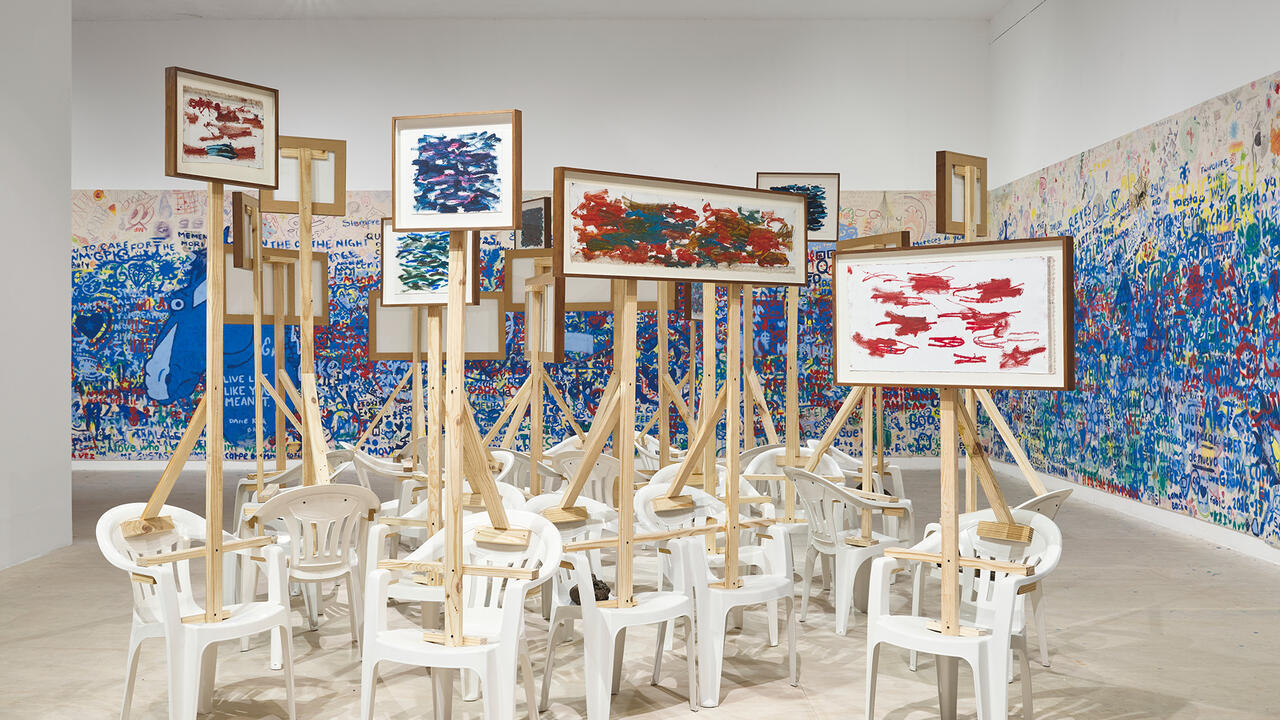Asparagus: A Horticultural Ballet

I’d never heard of Waw Pierogi or heard his minimal synth band xex, from South River, New Jersey, which released one album in 1980 before drifting into obscurity. Pil and Galia Kollectiv came across xex on the radio, fell in love with their oddly contemporary sound and embarked on a trail of research that led them to the tale of a ‘lost work’ by Pierogi entitled Asparagus: A Horticultural Ballet. It is not clear whether this multi-media spectacular was ever performed by Pierogi; the only clues to its form come from his description of ‘rotating hanging baskets of asparagus ferns’, ‘pirouetting ballet dancers in green headpieces’ and ‘attendants serving platters of freshly cooked asparagus’.
The Kollectivs’ resurrection of Asparagus: A Horticultural Ballet featured none of this. Despite retaining the title of the original, it took as much from other sources, such as Oskar Schlemmer’s also undocumented Triadic Ballet (1922) – a Bauhaus experiment in costume, music and movement – as it did from Pierogi. Lacking any kind of narrative structure for the piece, they apparently found Karl Marx’s Das Kapital (Capital, 1867) ‘obvious and ideal’ to be conveyed by six men dressed in asparagus suits, and divided the performance into three acts entitled ‘The Commodity’, ‘Labour’ and ‘Capital’.
Standing in for the long-disbanded xex was the Canadian ‘petrochemical rock’ trio Les Georges Leningrad, dressed in tailcoats and frocks and looking like the drinking partners of Henri de Toulouse-Lautrec. As the first rhythmic chimes of their minimal electronic score introduced the first act, the tip of a green hat sprouted through the gap in the curtains at the back of the stage; it was soon followed by a solemn pink face, a green-tunicked body and, finally, green-stockinged legs. This spear of asparagus was joined by two more; together they stepped stiffly, hands by their sides, forwards and backwards and side to side in a distinctly silly but not unimaginative approximation of the way asparagus might take to ballet, were it given the opportunity.
It wasn’t easy to relate the action on stage to the extensive notes on Das Kapital in the programme. If the asparagi could be understood to represent commodities, their carefully rehearsed choreography might vaguely have been read as the shuffling, alignment and accumulation of goods. Of course, the artists were working with a starkly limited palette, and so sophisticated communication of Marx’s magnum opus was presumably never on the cards. By reframing the most significant political theory of the last two centuries within the quickly forgotten high jinks of post-Punk suburban American hipsters, they were perhaps simply seeking to colour Pierogi’s work with some of the brave ambition of Marx and the Bauhaus. More likely they were interested in abstracting a set of histories to the point at which they broke from their original meanings and became alive once more in new hands.
In a subsequent exhibition at The Showroom a film showed a fictionalized account of the work’s rehearsal, with actors standing in for the director and cameraman. Clearly the Kollectivs hoped to distance themselves from authorship of the piece, standing back after setting its composite elements in motion. By describing a particular lineage within the avant-garde that used humour, surprise and irreverence as catalysts for political agitation, they, like many of their contemporaries, avoid dwelling on the melancholy that now dogs these Utopian moments. Instead the Kollectivs fill the space opened up by the failure of past convictions with new invocations of hopefulness, even if this is founded on little more than a cheerfully blasé attitude to meaningfulness and a taste for the redeeming power of the absurd.
Jonathan Griffin

















